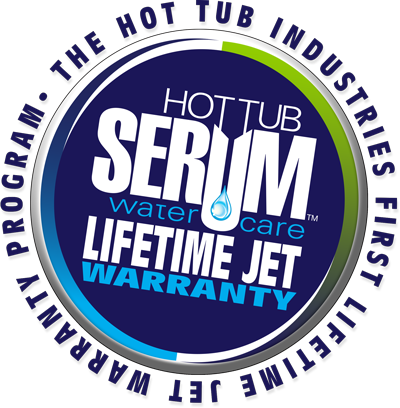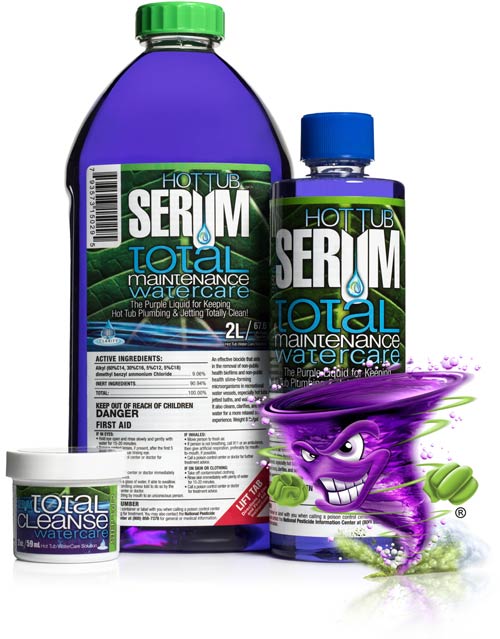I suppose it’s true in most businesses that certain beliefs come to have a sort of common acceptance. Some may be true, while others are not, and some are partially true. This month I thought I’d discuss a few of these “beliefs” in the hot tub business.
A Hot Tub Is A Small Pool
This is likely the most commonly held belief and superficially a hot tub does look rather like a small pool. However, there are some important differences, all of which make maintaining pure, pristine water more difficult.
1. Your typical hot tub is much warmer, generally around 20 – 25 degrees warmer, than a pool. As a result:
a. Bacteria and other pathogens replicate much faster. They like warm, moist environments.
b. Your sanitizer dissipates much more quickly, particularly if you are using chorine.
c. You may not realize it, since you are already wet, but you sweat in a hot tub. In fact, you sweat a lot – likely 1 – 2 pints in an hour with a spa at 102 degrees. Your sweat contains dead skins cells along with urea and other food sources for bacteria.
2. The jets in a hot tub will scrub millions of dead skin cells from your body as you use your hot tub. This is a food source for bacteria that is only minimally an issue in a pool.
3. To be blunt, you are a much larger pollutant in your spa than your hot tub.
a. Your typical pool has 15,000 – 20,000 gallons while the typical hot tub is around 400 – 450 gallons. Your pool will dilute anything you add through your use of the pool by a factor of 40 compared to your hot tub.
Spa Tech Can Tell If Your Spa Water Is Good By Looking At It
There is an element of truth to this, largely because most all of the time, when your spa water is cloudy, its due to a lack of sanitizer. After a while, a good spa tech can see even the smallest difference between crystal clear water and some cloudiness. The industry likes to call this “polishing water”. It refers to both effective water filtration and proper levels of sanitizer to produce crystal-clear water.
However, crystal-clear water can still be highly out of balance with pH out of whack, high levels of TDS (total dissolved solids), excessive levels of sanitizer, etc. Hence, just looking are your spa water is certainly not sufficient to ensure safe spa water. Testing is required.
Adding pH Up Or pH Down Will Ensure You Have The Proper pH level In Your Spa
Nope! It will not. When you are adjusting the pH of your water, you have to give your spa some time to “rest” between applications. When you add either pH Up or pH Down, you must wait 4 – 5 hours before testing your spa water again in order to get an accurate measure of pH.
And – there is another factor involved. It’s what are called pH buffers. pH buffers minimize pH swings in your spa. They are very helpful once your pH is in the correct range of 7.2 – 7.6, but they also make it difficult to adjust pH that is out of range. Alkalinity is a pH buffer, as is calcium to a lesser extent. So are Serum Total Maintenance and Swim Spa Serum, which is why we want you to add them AFTER you have your pH in the proper range.
You Can Use Any Brand of Spa Chemicals. They Are All The Same.
Again, there is an element of truth here but not entirely. pH Up, pH Down, and Alkalinity Up are all, pretty much, the same. However, both dichlor and MPS (non-chlorine-based shock) come in different concentrations, so they are not the same.
Then there is always the question of quality of ingredients so buying a brand you trust is a good idea. Here the fact that a hot tub is much smaller than a pool is a help. You really aren’t using a lot of chemicals to maintain your spa water, hence shopping on price does not make sense. Buy a trusted brand. By the way, we offer a # of spa chemicals under our HTS Turbo brand.
Test Strips Are As Good As Other Methods Of Water Testing
Generally, this is true as long as you understand the limitations of test strips. Test strips should be held a foot under water and then read immediately. Test strips start changing color immediately after you remove them from your spa water – and this is particularly true of the pH readings. You must read test strips immediately after you dip them in your spa. If you wait more than a few seconds your readings will be wrong.
Titration is the measurement process where you add a few drops (usually 5) of a reagent to a small column of water and then read the color of the water column against known concentrations. This takes a bit more time, but its highly accurate and the colors do not change.
There are also a number of fairly inexpensive (around $100) electronic measurement tools where you also add a few drops of a reagent, but the electronic instrument reads the color of the water column to generate a specific # reading. If you have trouble with colors, this is the way to go.
Thanks for reading,
Tony Turbo








